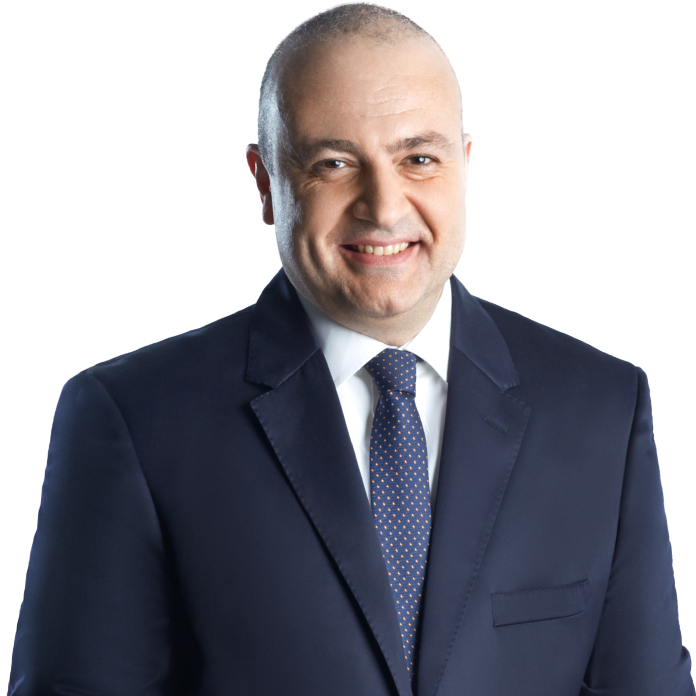Yesterday President Erdoğan set off for Ukraine for the Turkey-Ukraine Higher Level Cooperation Council meeting. Regarding the underlying reasons for the meeting, an official statement read, “…to consider the current, dual and regional topics and to accelerate the relationship with Ukraine, which carries the extent of a strategic partnership.” He also met with President Petro Porshenko and Prime Minister Arseniy Yatsenyuk.
However, the curiosity was what the President would say about the situation in Ukraine, that is, what is happening between Russia and the West, and the crisis that is having global effects. It is obvious that there is pure focus on the (EU) speech that the U.S., Russia and Germany will give. (While these lines are being written the press conference by Ukraine’s leader was not yet given. However, while you are reading, it would have made the newspapers already.)
It must not be forgotten that the visit was made during a significant time, when the American newspapers were criticizing the relations of Turkey and Russia, when the U.S. Secretary of State John Kerry said, “Negotiations with Assad are possible,” when the signatures for TANAP were done before the President made his move to Kiev, the Black Sea NATO drills were executed and Russian war planes tested the border.
Putin: Say hello to Ukraine. Erdoğan: You as well, to Armenia.
With no doubt we must place in the same course the private phone call. On the evening of the 17th President Erdoğan and Russian leader Putin had a half an hour discussion and the Ukrainian issue was also undertaken. “According to sources derived from the presidency, both leaders had an exchange of the resolution of the Ukrainian crisis and conflict.” (Milliyet, 03/17)
It was perceived that Ankara talked to Putin about their opinions on the Armenia visit, and Moscow talked to Erdoğan about their opinions on his visit to Ukraine. (The Ukraine crisis created a period which again brought NATO into an active status all along the western borders and this has a military meaning. Turkey is aware of this context. The opposite angle is this; in their own view, do they think that the closer ties being lived between Armenia and Ukraine, Turkey and Russia is a good thing or a bad thing? It might sound strange, but in both the countries’ capitols there are people who are glad about this.)
Over the tensions of Turkey, Ukraine would there be any type of discourse towards the U.S. and/or Russia? By taking a risk we can right that, Turkey will either not touch upon this topic at all or not step on to mines trusting the armor of the language of peace. Ankara foreign policy practicality and pragmatism will be content with focusing on relations between both countries.
In the press conference he held before his flight to Kiev, our colleagues could not overcome the “domestically newsworthy and popular question” but we can derive clues from what was said on behalf of the President’s visit; 1. We see the plan on the Ukraine-Syria-Iraq-Yemen line! 2. Our stance on the Ukraine crisis is simple: Let their territorial integrity be protected, let it be solved with crisis diplomacy. (So what if Washington or Moscow would be publicly criticized? You can be sure that will be my topic for my next writing.)
There are three ways to do one job
"The right way, the wrong way and the military way…"
Let us look at the military tensions from the confrontation of the West-East over Ukraine a little, because there is a new and serious problem here.
Russia’s frightening military operations are continuing in the “combat” zone that the Black Sea has an important foot in, which contains the Baltic-Arctic area.
And maybe this is a combat simulation with NATO.
Forty-five thousand soldiers, 3,000 vehicles, around 45 battleships, 15 submarines and 110 warplanes. That’s not all. Mobile ballistic missiles and strategic bomber aircraft, Tu-22m3 long-range strategic bomber aircraft that are being talked about in Crimea and ballistic missile-firing submarines along with guard ships. It is an operation that stretches from the North, Baltic and Black Sea fleets all the way to the military zones in the south. Is this Russia’s biggest operation? No. However it is the most strategic and dangerous!
The front line, the readers of this corner will remember this well because I have mapped this out more than once; “Now, the Baltic, like a bow Europe along with its borders and the Black Sea.” And this is still a mini-map. Plus, there is a nuclear tone present. The deployment of ballistic missiles and strategic bomber planes are signaling this. Besides that, it is impossible for the West to see this volume and mentality. But when we compare this to the operations the U.S. is doing in the region, this becomes a “dwarf”. (What we understand from here is, the U.S. is trying to gain political benefits from Europe through this elevated threat and they want Europe’s “old love” back.)
On top of that, this is a “sudden” operation. No one had any idea, it started on the 16th. And of course the timing of the operation carried out on this wide front coincides with when Putin mysteriously disappears. It is not even ‘significant timing’; it is dangerous.
It is obvious that the Kremlin, rather than losing or winning this - let us not say future but - probable war, is underlining what this war could cost them. Also Ukraine is signaling that it will not even take one step back and it will allow for the trial of the military to be one and done.




















